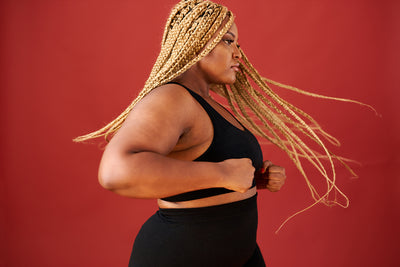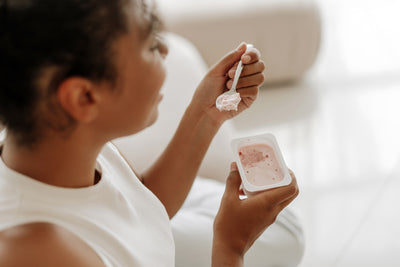We don't usually think about all the things our bones do for us. For example, they protect our organs from injury and store essential minerals like calcium and phosphorous, which can be released into the body when we need them the most.
For Vicki, a long-time Fit In customer, her bone health took center stage when she received an osteopenia diagnosis. Osteopenia is a condition in which you lose bone mass, and your bones get weaker due to losing calcium. People who have osteopenia are at an increased risk of developing osteoporosis.
Bone density decreases at age 35
Throughout our lives, the tissue in our bones dissolves and is replaced. However, around age 35, the tissue tends to dissolve faster than it is replaced. This leads to bone loss. Even very healthy people experience bone density loss – it's estimated a healthy person sees bone density decrease by less than 1% per year. Women are at an increased risk of developing osteopenia and osteoporosis. Additionally, being thin or having a small frame, smoking, having a history of anorexia, heavy drinking, and getting too little calcium put you at an increased risk of developing those conditions.
Vicki's doctor told her her slight frame was a risk factor for osteoporosis. So after the baseline bone density exam showed Vicki had osteopenia, her doctor prescribed calcium and vitamin D supplements and prescription medication.
"My doctor also said it would be really great if I did some weight-bearing exercises," she recalls. "I was not, at that time, doing any exercising. I would walk – commuting to the city every day, so I was walking, going up and down the subway stairs. So I was on my feet a lot, but I was not doing any kind of structured exercise."
Exercise to increase bone density
Weight-bearing exercises are recommended to increase muscle and bone strength, improve balance, and relieve pain. These exercises can include strength training with weights, resistance bands, dancing, Tai chi, and running. Yoga and Pilates are also suitable forms of exercise to strengthen bones; however, some movements in Pilates and yoga can increase fracture risk for people with osteopenia or osteoporosis.
Despite the recommendation to exercise, it took Vicki two years to find a workout routine that worked for her.
“There was nothing in our neighborhood at that time that I felt comfortable going to. But when I saw The Fit In, it was so close to my house and it has such an incredible community,” Vicki says. Soon after joining The Fit In, Vicki went from weekend workouts to a mix of Pilates and Strong classes four-five days a week. Vicki soon learned her workout routine was helping to counter the effects of age on her bones.
“Between the second exam and third, I had maybe started working out at The Fit In for six or seven months. The first bone density test showed a decline in my bone density but the third one showed that I had stabilized and wasn’t going down,” she says.
Buoyed by the impact of her workout routine, Vicki increased her workout frequency and spoke to Ife, the founder of The Fit In, about holding private sessions focused on strengthening her bones.
"We did an assessment session. Even though she'd been seeing me in her classes for almost two years, it was an opportunity to sit down and find out what was motivating this desire for one-on-one work," she says. "I said I wanted to increase my bone density. If osteoporosis isn't treated, when you get older, if you fall, you will have a broken bone, and it really impacts your overall. So I was like, I do not want that."
With a focus on bone density in mind, Ife designed a private training routine. Broken into six-week cycles, the program aims to increase mobility and strengthen muscles through weight-bearing exercises, cardiovascular conditioning, and core strengthening. In each session, Ife tracks the amount of weight and the repetitions Vicki completes for each movement. The goal is to increase the weights lifted and the repetitions from week to week.
Since starting this program, Vicki says she not only feels stronger but has reduced pain in her shoulder and neck. She also says her posture has improved as her core has strengthened. Additionally, her bone density has improved.
“I just got another bone density test and the density of the bone in my spine has increased at a statistically significant rate and my hip bone density has also increased,” she exclaims.
These gains are important to Vicki, who has friends who have experienced broken bones likely due to low bone density. "I have a friend who I grew up with in Australia, and she has a similar build to mine. She's a little younger than I am, but she's already had a bone fracture," Vicki says. "I told her she needs to get a bone density scan and work on it because, at some point, it gets harder and harder to achieve increased bone density as you get older.
She adds: “I’m really glad I started doing this now. Before I get into my 60s, when it will be more difficult. If I continue to build on this I could really change the trajectory of my health for the next few decades.”






Leave a comment